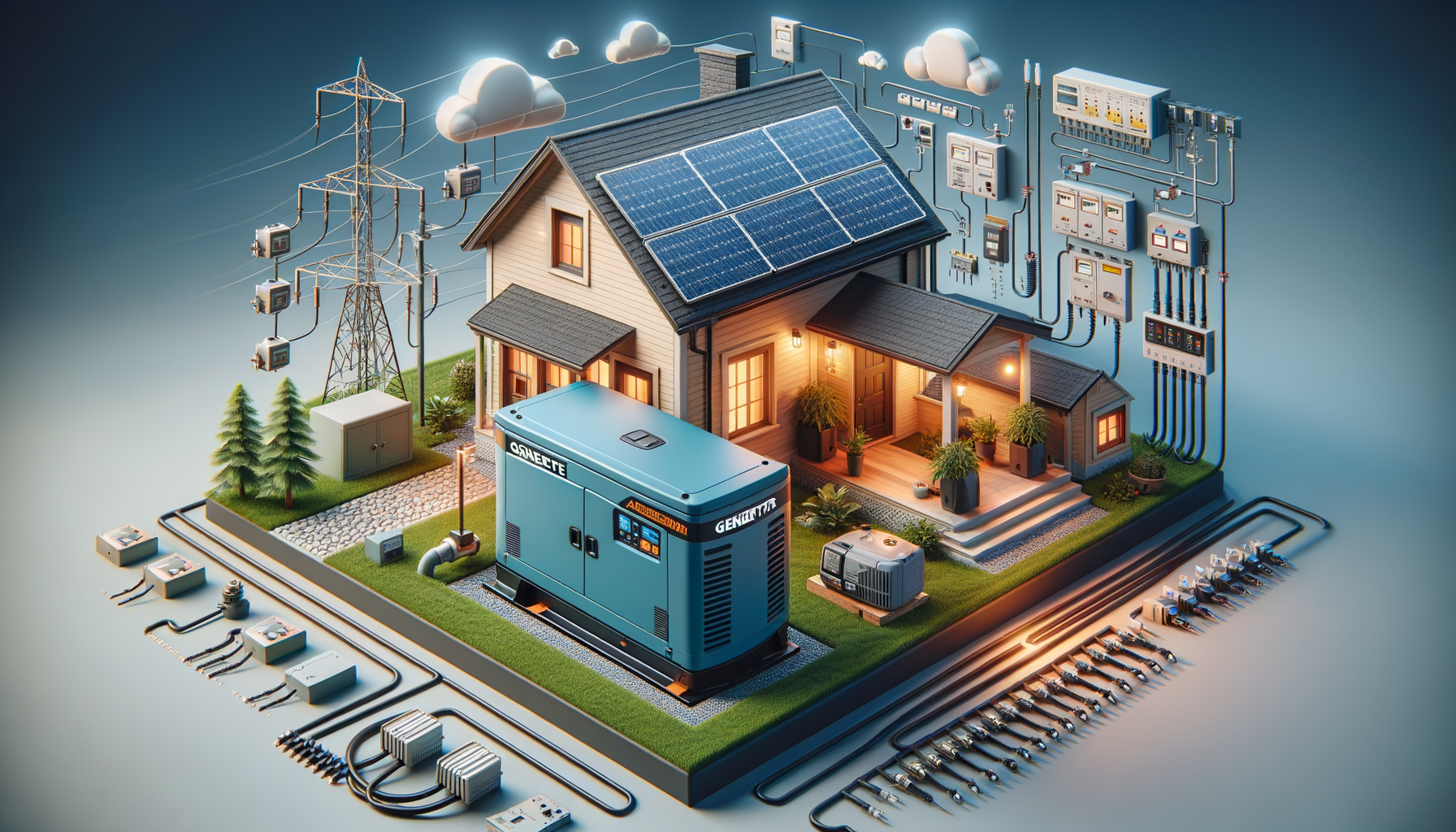Understanding Home Backup Generators
Home backup generators are essential devices that provide electricity during power outages, ensuring that homes remain functional and comfortable. These generators are typically installed outside the home and automatically turn on when the power goes out, providing a seamless transition to backup power. Homeowners often choose backup generators to avoid the inconvenience and potential hazards associated with power outages, such as food spoilage, loss of heating or cooling, and interruption of essential medical devices.
There are two primary types of home backup generators: portable and standby. Portable generators are usually less expensive and can be moved as needed, but they require manual setup and connection. Standby generators, on the other hand, are permanently installed and automatically activate when the power fails. While they are more costly, standby generators offer greater convenience and reliability.
The importance of having a backup generator cannot be overstated, especially in areas prone to severe weather or frequent power outages. With the increasing frequency of extreme weather events, the need for reliable backup power solutions is more relevant than ever. Homeowners are investing in generators to ensure they have a dependable source of power, regardless of the circumstances.
How Home Backup Generators Work
Home backup generators are designed to operate automatically, providing power to essential circuits within seconds of a power outage. When the main power supply is interrupted, the generator’s transfer switch detects the loss of power and starts the generator. This switch then disconnects the home from the grid and connects it to the generator, ensuring a continuous power supply.
The generator itself is powered by an internal combustion engine, which runs on fuel such as natural gas, propane, or diesel. The engine drives an alternator, which produces electricity to power the home. The size and capacity of the generator determine how many appliances and devices it can support. Most homeowners choose generators that can power essential systems like heating and cooling, refrigeration, lighting, and medical equipment.
It’s important to regularly maintain and test home backup generators to ensure they operate correctly when needed. Maintenance typically includes checking fuel levels, inspecting the engine and electrical connections, and running the generator periodically to keep it in good working order. By understanding how these generators work and maintaining them properly, homeowners can enjoy peace of mind knowing they are prepared for any power outage.
Choosing the Right Generator for Your Home
Selecting the right home backup generator involves considering several factors, including power needs, fuel type, and budget. To determine the appropriate size and capacity, homeowners should first calculate their household’s power requirements. This involves identifying essential appliances and systems that must remain operational during an outage and determining their combined wattage.
Fuel type is another important consideration. Natural gas and propane are popular choices due to their availability and cleaner burning properties. Diesel generators are also an option, offering high efficiency and long runtime, but they may require more maintenance and produce more emissions.
Budget constraints will also play a significant role in the decision-making process. While portable generators are more affordable, they may not provide the same level of convenience and reliability as a standby unit. It’s essential to weigh the pros and cons of each type and consult with a professional to ensure the chosen generator meets the home’s specific needs.
By carefully evaluating these factors, homeowners can select a generator that provides optimal performance and reliability, ensuring they are well-prepared for any power outage.
Installation and Maintenance of Home Generators
Proper installation and maintenance of home backup generators are crucial to ensure their reliability and longevity. Installation should be performed by a qualified professional to guarantee compliance with local codes and regulations. The process typically involves selecting an appropriate location, installing the generator and transfer switch, and connecting the system to the home’s electrical panel.
Regular maintenance is essential to keep the generator in good working condition. This includes routine inspections, oil and filter changes, and testing the system to ensure it operates correctly. Many manufacturers recommend an annual service by a professional technician to address any potential issues and perform necessary adjustments.
Homeowners should also be aware of the importance of keeping the generator area clear of debris and ensuring proper ventilation. This not only prevents potential hazards but also allows the generator to function efficiently. By following these guidelines, homeowners can ensure their backup generator is ready to provide reliable power when needed.
Environmental and Economic Considerations
When selecting a home backup generator, it’s important to consider both environmental and economic factors. Generators running on natural gas or propane are generally more environmentally friendly than diesel models, as they produce fewer emissions. Choosing a generator with a higher efficiency rating can also help reduce environmental impact by consuming less fuel.
Economically, investing in a home backup generator can be a wise decision for homeowners who frequently experience power outages. While the initial cost of purchasing and installing a generator can be significant, the long-term benefits of having a reliable power source can outweigh these expenses. Additionally, some insurance companies offer discounts to homeowners with backup generators, further offsetting the cost.
By considering both the environmental and economic implications of their choice, homeowners can make informed decisions that benefit both their household and the planet. A well-chosen generator not only provides peace of mind but also contributes to a more sustainable and resilient home.




Leave a Reply